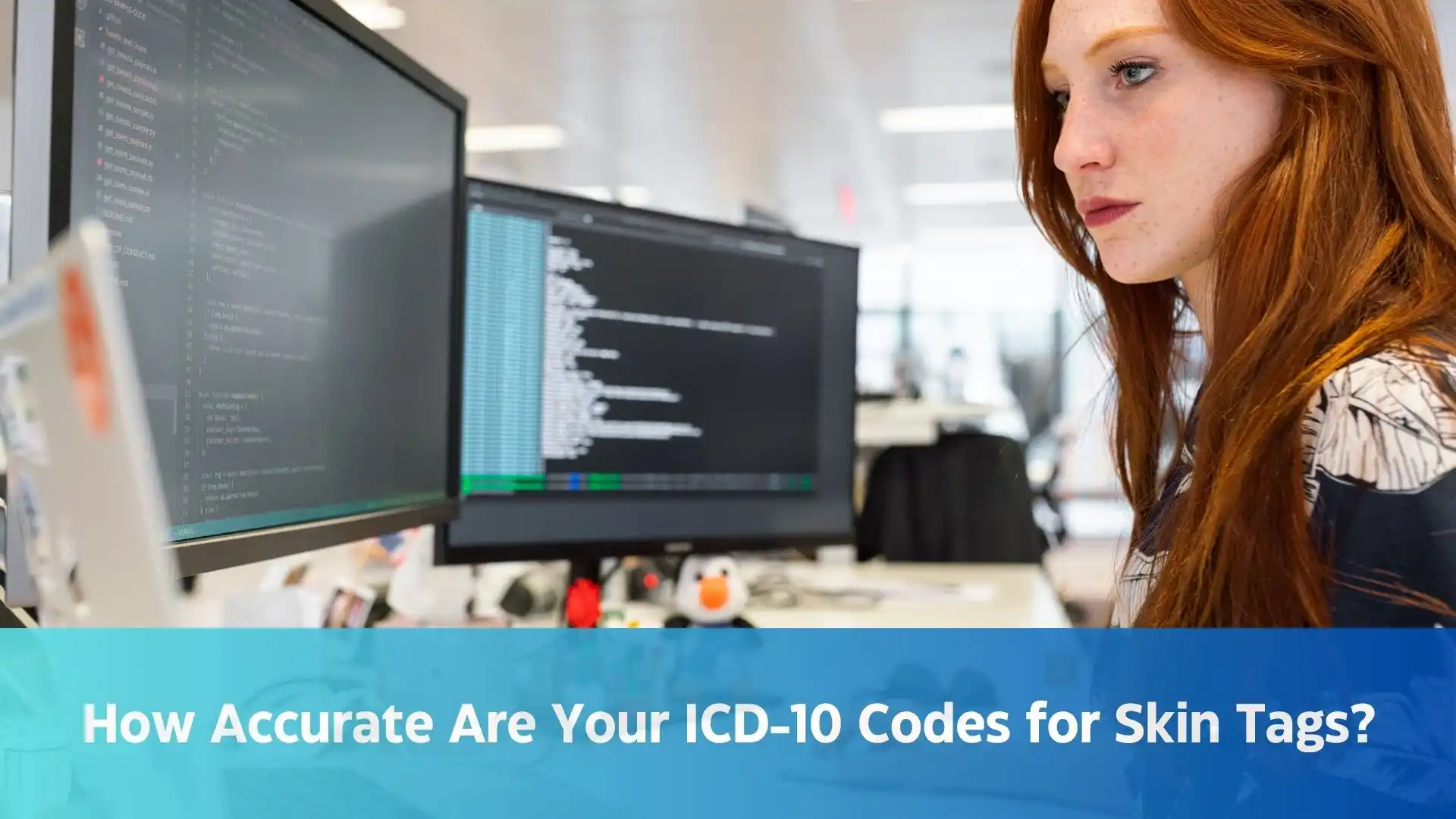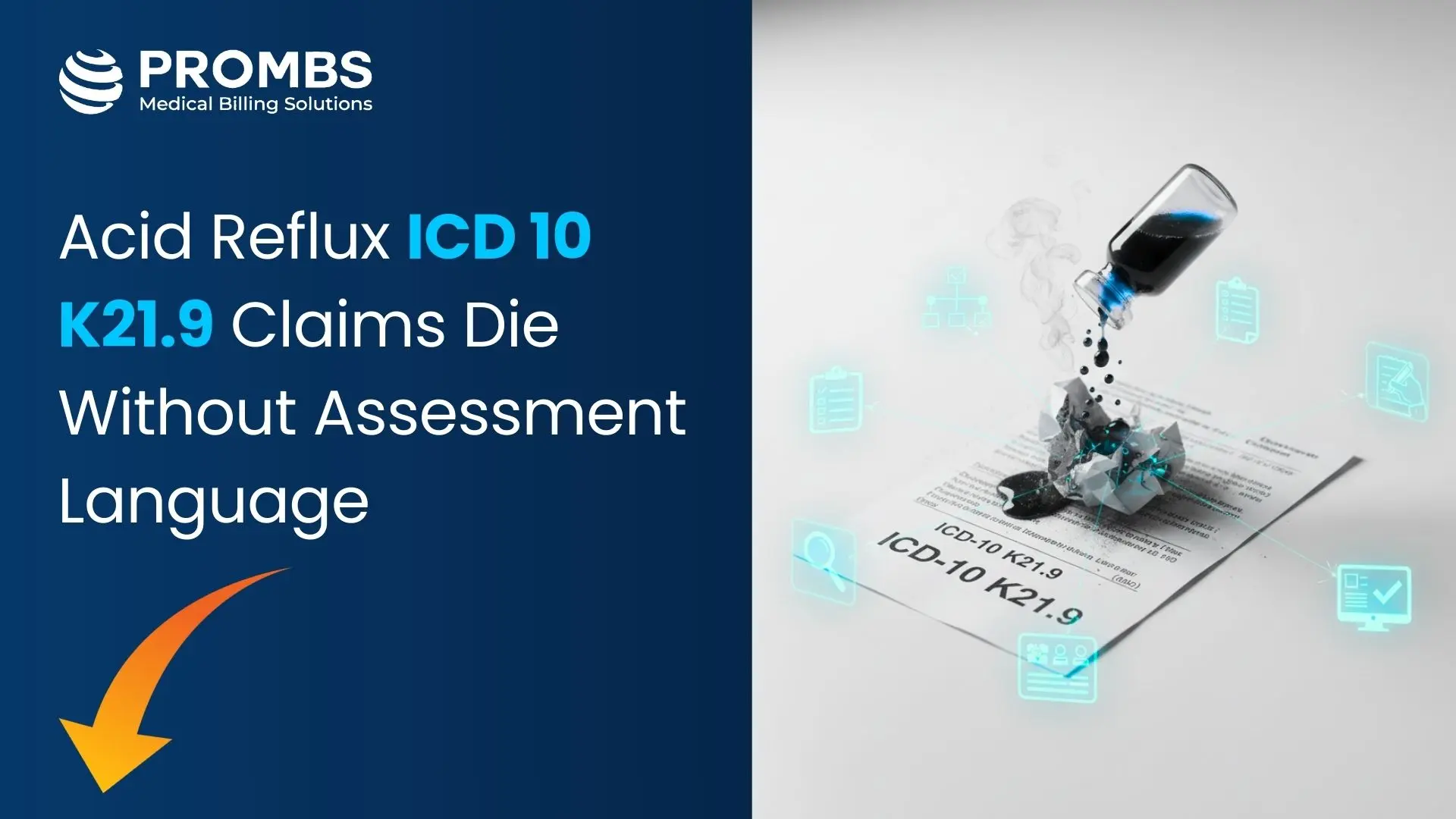✅What Are the Exact ICD-10 Codes for Skin Tags?
1️⃣What Healthcare Providers Need to Know About ICD-10 Codes?
What are Skin Tags
Insurance Companies Pay for Skin Tag ICD-10?
🩺Skin Tag ICD-10 Codes List
| Skin Tag ICD-10 Condition/Location | ICD-10 Code | Reason / Explanation | Billable/Unbillable |
|---|---|---|---|
| Neck | L91.8 | Hypertrophic skin disorders can cause skin tags in areas such as the neck. | Billable |
| Irritated | L91.8 | Irritated skin tags fall under the category of ‘other hypertrophic disorders of the skin’. | Billable |
| Inflamed | L98.8 | Inflamed skin tags are classified under “Other specified disorders of the skin” for coding purposes. | Billable |
| Eyelid | D23.9 | Benign skin growth that includes skin tags found in specific areas such as the eyelid. | Billable |
| Face | D23.9 | Benign skin neoplasm of unspecified type includes skin tags found on the face. | Billable |
| Left Axilla | L91.8 | Skin tags, classified as hypertrophic skin disorders, can commonly develop in the axilla (underarm area). | Billable |
| Bleeding | L98.8 | Bleeding skin tags are classified under “Other specified disorders of the skin.” | Billable |
| Rectal | K64.4 | Residual hemorrhoidal skin tags commonly appear around the rectal area. | Billable |
| Genital | L98.8 | Genital skin tags are categorized under "Other specified disorders of the skin." | Billable |
| Unspecified | D23.9 | Benign skin growths that are not specifically categorized, including unspecified skin tags. | Billable |
| Labial | L98.8 | Skin tags located on the labia are categorized under “Other specified disorders of the skin.” | Billable |
| Groin | L91.8 | Hypertrophic skin disorders can also manifest as skin tags in the groin region. | Billable |
| Back | D23.9 | Benign skin neoplasm—back is categorized under unspecified skin locations. | Billable |
| Perianal | K64.4 | Perianal skin tags are categorized as residual hemorrhoidal skin tags. | Billable |
| Ear | D23.9 | Unspecified benign skin neoplasm can occur in various areas, including the ear. | Billable |
| Anus | K64.4 | Skin tags resulting from hemorrhoids often appear around the anal area. | Billable |

💡 Billable Skin Tag ICD-10 Codes
D23.9 for Benign Neoplasm of Skin
D23.9 for Benign Neoplasm of Skin, Unspecified
📘 ICD-10 Code K64.4: When to Use It for Residual Hemorrhoidal Skin Tags
L72.3 for Miliaria Rubra
L72.0 – Epidermal Cyst
L91.0 for Hypertrophic Scar
Best Practices for Skin Tag ICD-10
Outsource ICD-10 Coding for Skin Tags
✅ 1. Skin tags are soft and small growths on the skin. They are mostly harmless and can appear on various parts of the body.
✅ 2. They feel smooth and soft to the touch and are generally small, sometimes appearing slightly darker or light brown.
✅ 3. Common areas include the groin, armpits, underarms, eyelids, anal region, neck, and lower torso.
✅ 4. They typically pose no health risk unless frequently rubbed by clothing, jewelry, or touched excessively.
✅ 5. Skin tags are more common in middle-aged and older individuals, especially those who are overweight or obese.
✅ 6. The exact cause is unknown, but hormonal changes (e.g., during pregnancy) and conditions like diabetes may contribute.
✅ 7. They are not contagious and do not spread from person to person.
✅ 8. Removal is often done for aesthetic, comfort, or medical reasons — but insurers usually don’t cover it if done for cosmetic purposes.
✅ 9. Common removal methods include freezing (cryotherapy), cauterization, and snipping with sterile scissors.
✅ 10. Skin tags are not the same as warts, moles, or cysts — they are distinct in diagnosis and treatment.
Frequently Asked Questions
The main Skin Tag ICD-10 code used by healthcare providers is L91.8, which falls under “Other hypertrophic disorders of the skin.” This code helps accurately describe the condition when billing insurance or recording patient information.
Using the right Skin Tag ICD-10 code ensures that your claim is accepted by insurance and that the treatment is documented properly. It prevents delays, denials, and helps your practice get paid faster.
Yes! While L91.8 is common, other codes like D23.9 or L98.8 may be used depending on where the skin tag is located or if it’s inflamed or irritated. That’s why professional coding is so important—it gets the details right.
In many cases, insurance may not cover skin tag removal unless it’s medically necessary (like bleeding or irritation). But using the correct Skin Tag ICD-10 code helps show the clinical reason, improving your chances of coverage.
Medical billing professionals or certified coders should handle Skin Tag ICD-10 coding to avoid mistakes. Partnering with experts ensures accuracy, faster reimbursement, and peace of mind for your practice.
Pro Medical Billing Solutions specializes in dermatology billing with unmatched accuracy in Skin Tag ICD-10 coding to help you get paid faster and smoother. We take care of everything—from correct code selection to smooth claim submission—so your practice runs better and earns more.
Pro Medical Billing Solutions brings exceptional expertise in accurately coding skin conditions like skin tags using the correct Skin Tag ICD-10 codes such as L91.8, D23.9, and L98.8. Their certified professionals don’t just code—they optimize. With unmatched precision and deep industry knowledge, they reduce denials, accelerate reimbursements, and bring real, measurable results that elevate your practice toward financial stability and operational efficiency.



